First Aid for Burns: Immediate Actions and Long-Term Care.
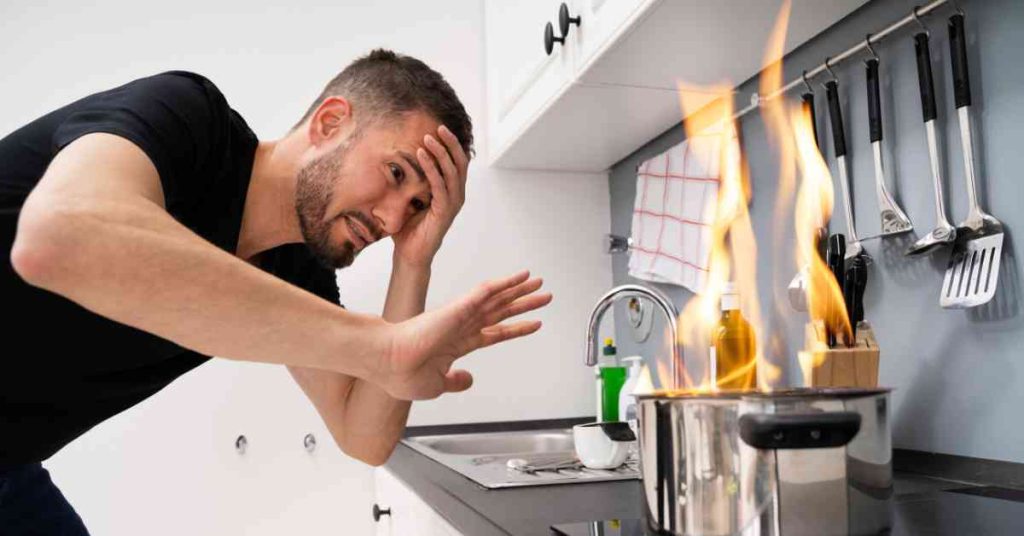
Burn injuries are among the most common household accidents, and their impact can range from minor discomfort to life-threatening emergencies. Understanding first aid for burns is not only crucial for immediate pain relief but also for reducing the risk of complications and promoting faster healing.
Each year, millions of people worldwide experience burn injuries. In Australia alone, there is an estimated 1000 children that receive hospital and emergency treatment for burns annually. These statistics highlight a pressing need for widespread knowledge and preparedness in handling such injuries.
This blog aims to equip its readers with essential information on managing burns effectively, from immediate actions to long-term care, thereby potentially saving lives and reducing the long-term impact of these all-too-common accidents.
Understanding Burns
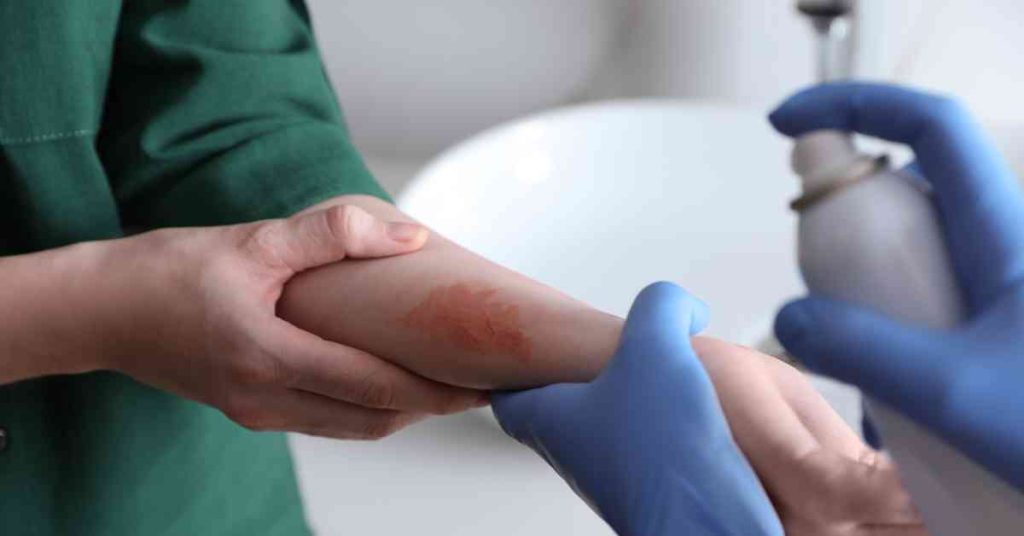
Burns, a prevalent form of injury, can be classified based on their severity into three primary categories: first-degree, second-degree, and third-degree burns, each with distinct characteristics and required treatments.
First-degree burns are superficial, affecting only the outer skin layer, and are marked by redness and mild pain, similar to a mild sunburn.
Second-degree burns are more severe, extending into the deeper layer of the skin, causing blisters, severe pain, and swelling.
Third-degree burns, the most severe, penetrate the full thickness of the skin, destroying both the outer and inner layers. These burns may appear white, charred, or leathery and can cause numbness due to nerve damage.
Common causes of burns in everyday life include cooking accidents, such as oil splashes or contact with hot surfaces, electrical burns from malfunctioning appliances, and scalds from hot liquids.
Understanding these types and causes is crucial for effective first aid response and prevention strategies.
- First-Degree Burns: Affect only the outer skin layer, causing redness and mild pain.
- Second-Degree Burns: Extend into the deeper skin layer, leading to blisters, severe pain, and swelling.
- Third-Degree Burns: Penetrate the full thickness of the skin, possibly causing numbness and appearing white or charred.
- Common Causes: Include cooking accidents, electrical burns, and scalds from hot liquids.
Immediate Actions for Burn First Aid
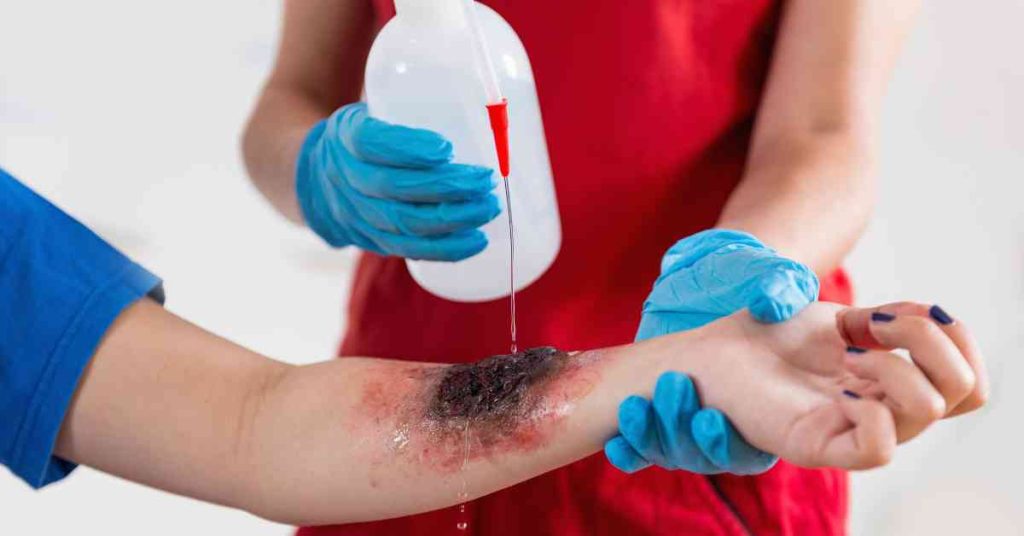
When a burn occurs, prompt and proper first aid can be critical in minimizing damage and aiding recovery. The initial steps are straightforward but vital.
First, ensure the removal of the source of the burn to prevent further injury. This might involve quickly turning off an electrical source or removing the person from direct heat.
Next, cool the burn by running cool (not cold) water over it for 20 minutes, which also helps reduce swelling and pain.
Covering the burn is the next step, using a sterile, non-fluffy cloth or clingfilm to protect the area.
Managing pain is crucial; over-the-counter pain relievers can be used, but avoid applying ice, which can worsen the injury.
It’s important to know when to seek medical help—deep burns, burns larger than the person’s palm, or burns on sensitive areas like the face or joints require professional medical attention.
Awareness of the do’s and don’ts, such as not bursting blisters or not using ice, is essential to avoid common misconceptions and ensure proper care.
- Removing the Source: Ensure the source of the burn is removed immediately.
- Cooling the Burn: Run cool water for 20 mins over the burn to reduce pain and swelling.
- Covering the Burn: Use clingfilm or a non-stick dressing to protect the burn area.
- Pain Management: Utilize over-the-counter pain relievers; avoid ice.
- Seeking Medical Help: Important for deep, large, or sensitive area burns.
Long-Term Care and Management
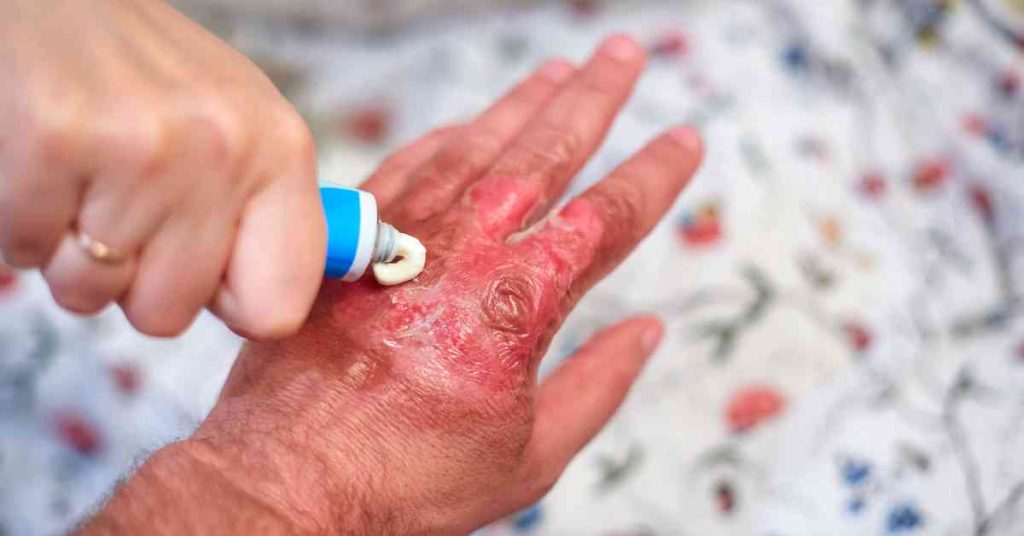
The journey to recovery from a burn injury extends far beyond the initial first aid. Understanding the healing process is crucial for effective long-term care and management.
Typically, the healing phase varies depending on the burn’s severity, with first-degree burns healing within a week, while more severe burns may take longer and require medical intervention. During this time, proper wound care and monitoring for signs of infection are critical.
Scarring is a common concern with burns, particularly with second and third-degree injuries. Utilizing silicone gel sheets, pressure garments, and appropriate moisturizing creams can aid in scar reduction. For extensive scarring, consulting a specialist for potential treatments like laser therapy or surgical revision is an option.
Beyond physical healing, burns can leave a significant psychological impact, including trauma, anxiety, or self-esteem issues. Seeking support from counseling or support groups can be beneficial in addressing these emotional challenges.
This holistic approach to recovery emphasizes not just the physical healing but also the emotional well-being of the individual.
Prevention Tips
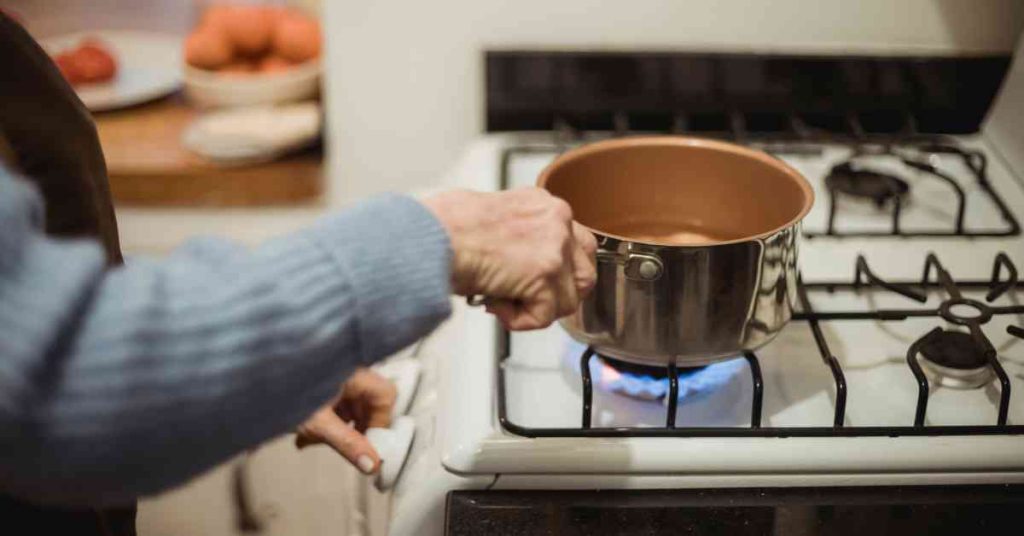
Preventing burns, whether at home or in the workplace, is crucial for safety and well-being.
In the home, simple measures can significantly reduce the risk of burns. This includes keeping hot liquids and appliances out of children’s reach, using oven mitts while cooking, and ensuring smoke detectors are functional. Regularly checking and maintaining electrical appliances also prevent electrical burns.
In the workplace, adhering to safety protocols is key. This involves wearing appropriate protective gear, being trained on how to handle hot materials or chemicals properly, and ensuring a well-organized work environment to prevent accidents. Employers should also conduct regular safety drills and provide first aid training to employees. By following these tips, individuals can significantly reduce the likelihood of burn injuries in both home and work environments.
Home Safety Tips:
- Keep hot liquids and appliances out of children’s reach.
- Use oven mitts and handle hot items carefully.
- Regularly check and maintain electrical appliances.
- Ensure functional smoke detectors are in place.
Workplace Safety Guidelines:
- Adhere to safety protocols and wear protective gear.
- Proper training on handling hot materials and chemicals.
- Maintain a well-organized work environment.
- Regular safety drills and first aid training for employees.
The First Aid Nest run public and workplace first aid courses, Australia wide.
Our workplace first aid courses can be run at your site.
Our public classes are here in Sydney and are the best option if you are an individual, a couple or a group
of just a few people.
Our sophisticated system will take the headache out of renewal for you too. Lose your certificate? No problem, just log in and download your certificate again anytime. We will also send you reminders about when your certificate is about to expire!
Book your spot or workplace with us today, contact us with any questions, or head to our FAQ page

